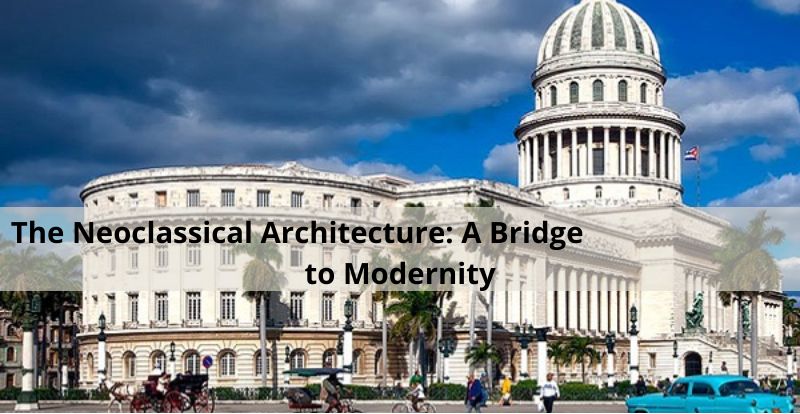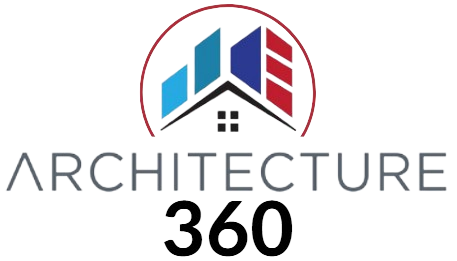The Neoclassical Architecture: A Bridge to Modernity
The Neoclassical Architecture: A Bridge to Modernity. In the 18th century, Europe witnessed a significant architectural shift - the emergence of Neoclassical architecture. Reacting against the ornate excesses of the Baroque and Rococo styles, Neoclassicism sought a return to the aesthetic values of ancient Greece and Rome, emphasizing simplicity, symmetry, and proportion.
It may interest you: Exploring the Essence, Style, and Masterpieces of Neoclassical Architecture
Video: Neoclassical Design Style

Exploring the lasting influence of neoclassical ideals on contemporary design
Legacy of Neoclassicism in Modern Architecture
The influence of Neoclassicism on modern architecture is profound and unmistakable. Throughout the 19th and early 20th centuries, architects drew inspiration from its classical ideals of beauty and perfection. Iconic structures such as the United States Capitol and the Paris Opera House bear strong Neoclassical influences in their design, embodying a timeless elegance that continues to captivate admirers.
Exploring Neoclassical Architecture
Neoclassical architecture, born from a reverence for the ancient world, redefined the architectural landscape of Europe and America in the 18th and 19th centuries. Its hallmark features included a revival of classical forms and elements - columns, pediments, friezes - in pursuit of simplicity, clarity, and proportion.
One of its defining characteristics is symmetry and proportion, evident in the balanced arrangement of architectural elements like columns and arches. These principles create a sense of harmony and equilibrium, essential for evoking classical ideals of beauty.
Another distinguishing feature is the use of classical materials such as marble and granite, revered for their durability and timelessness. Decorative details like friezes, cornices, and moldings adorned Neoclassical buildings, echoing the opulence of ancient architecture.
Columnar elements play a pivotal role in Neoclassical design, providing structural support while lending a classical aesthetic. Three main types of columns - Doric, Ionic, and Corinthian - offer varying degrees of ornamentation, from the robust simplicity of the Doric to the intricate elegance of the Corinthian.
The crowning feature of Neoclassical facades is the pediment, a triangular structure often embellished with sculptures or reliefs. Serving both decorative and symbolic purposes, pediments impart grandeur and majesty to buildings, evoking the splendor of antiquity.
Influence on Modern Architecture
The legacy of Neoclassicism endures in modern architectural practice, evident in the incorporation of classical elements into contemporary designs. Columns, pediments, and symmetrical layouts continue to grace public and residential buildings, serving as a testament to the enduring appeal of Neoclassical aesthetics.
The pursuit of simplicity, clarity, and proportion remains a guiding principle in modern architecture, with classical elements lending a sense of timelessness and elegance to contemporary structures.
Unraveling the Architectural Paradigms of Neoclassicism
The beauty of Neoclassical architecture lies in its architectural paradigms, characterized by symmetry, proportion, and ornamentation. Symmetry, achieved through the balanced arrangement of elements, imparts visual equilibrium to facades, echoing classical ideals of harmony.
Proportion, derived from classical Greek and Roman architectural traditions, imbues structures with a sense of balance and beauty. Harmonic proportions, such as the golden ratio or the 3:5 ratio, evoke a timeless aesthetic that transcends cultural and temporal boundaries.
Ornamentation plays a crucial role in Neoclassical architecture, enriching facades with decorative motifs inspired by classical antiquity. From simple moldings to elaborate sculptures, ornamentation enhances the grandeur and sophistication of Neoclassical buildings, reinforcing their classical lineage.
The influence of Neoclassical architecture on modern design is evident in iconic landmarks like the White House in Washington, D.C., and the Palace of Versailles in France. Neoclassicism has also inspired the creation of new architectural styles, such as Art Deco and the Modern Movement, which blend classical elements with contemporary sensibilities.
Tracing the Historical Roots of Neoclassical Art
Neoclassical art emerged in Europe in the late 18th and early 19th centuries, drawing inspiration from the artistic ideals and forms of ancient Greece and Rome.
Historical precedents for Neoclassicism can be found in the Renaissance, which witnessed a revival of interest in classical culture and humanistic values. During this period, a architectural style known as Renaissance classicism emerged, inspired by the forms and proportions of Greco-Roman architecture.
Another significant precursor is the Baroque, characterized by its exuberance and drama. However, in the late 17th century, there was a shift towards a more restrained and balanced aesthetic, known as Late Baroque or Classical Baroque.
The Enlightenment also exerted a profound influence on Neoclassical art, promoting reason, liberty, and equality. These values found expression in Neoclassical art through the depiction of historical and mythological themes that exalted virtue and reason.
Neoclassical architecture reached its zenith in the 18th and early 19th centuries, adorning public and religious buildings with geometric simplicity, symmetry, and proportion. While rooted in Greco-Roman architecture, Neoclassical buildings also incorporated elements from other styles, such as Gothic and Renaissance.
The influence of Neoclassical art on modern architecture
is evident in many of the 20th century's most iconic buildings. The Guggenheim Museum in New York, designed by Frank Lloyd Wright, blends Neoclassical forms with modern materials and technologies, creating a synthesis of past and present.
Neoclassical architecture has left an indelible mark on modern architecture. Its elegant lines, harmonious proportions, and emphasis on symmetry and clarity continue to inspire contemporary architects, bridging the gap between tradition and innovation.
Si quieres conocer otros artículos parecidos a The Neoclassical Architecture: A Bridge to Modernity puedes visitar la categoría Neoclassical.

Leave a Reply